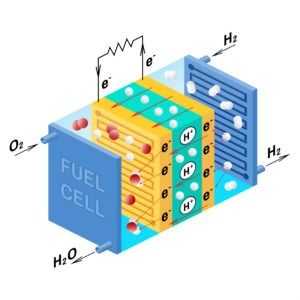Hydrogen Gas Detection
Hydrogen is an essential industrial gas that is also becoming increasingly important as a fuel. Hydrogen, however, is fundamentally different from any other fuel source, in terms of both its hazards and its function.
As the global hydrogen economy continues to grow, it is anticipated that hydrogen will play a key role in decarbonizing the world’s energy supplies. The widespread adoption of hydrogen technologies necessitates the use of robust safety measures, including the deployment of dependable hydrogen gas detection systems.
The Importance of Hydrogen
Almost every fuel currently in use worldwide is derived from naturally occurring gas or oil. These fuels are a finite resource and their ongoing use is damaging to the environment. Because of this, the world is moving more towards renewable energy sources.
Increased renewable energy production poses its own challenges, however. There are questions around how best to store energy produced by intermittent sources such as solar and wind as well as other issues around the capacity of transport and industrial sectors currently reliant on energy-dense chemical fuels to operate in a post-carbon economy.
Hydrogen presents a viable solution to both of these issues. Hydrogen is commonly used as an industrial gas and is currently produced via steam methane reforming (SMR).Renewable energy can be employed in the creation of hydrogen gas via processes like water electrolysis, essentially locking that energy within hydrogen molecules. In this context, hydrogen acts as an energy storage medium as opposed to conventional fuel.
Hydrogen has a number of advantages over other energy storage technologies. Like traditional fuels, hydrogen displays a very high energy density. This energy density is far higher than that of batteries or capacitors while being capable of storing energy indefinitely with no losses.Unlike traditional fuels, hydrogen does not produce dangerous emissions at the point of use. Water remains the only by-product of burning hydrogen.While hydrogen technology remains relatively new, there is already evidence to suggest that hydrogen may become considerably less expensive per unit of energy stored than batteries.
The Risks of Hydrogen
The increased uptake of hydrogen technologies also presents a number of risks. Hydrogen performs well as a fuel, but it also provides a much greater risk of explosion compared to other gas and liquid fuels.
Hydrogen is much harder to contain than other gases therefore it is extremely prone to leaking out of containment.
Hydrogen is also highly flammable. Hydrogen in air is flammable at concentrations between 4% and 75% by volume. The energy necessary for the ignition of a hydrogen/air mixture is also significantly lower than that of other fuels. The minimum amount of energy needed to ignite a hydrogen/air mixture is just 0.017 mJ. The minimum ignition energy for hydrocarbon fuel gases is comparatively much higher, at around 0.3 mJ for propane/air or methane/air mixtures.
These factors mean that hydrogen leaks are common, and even miniscule hydrogen leaks can ignite relatively easily. As such, suitable measures must be put in place to manage and minimize any risk of hydrogen leaks.
Hydrogen Gas Detection Technology
Pellistor
Pellistor (also known as a catalytic bead) sensors employ a catalyst that prompts flammable gas entering the sensor to ignite at a far lower temperature than usual. As combustion occurs, a proportional amount of heat is produced to match the amount of flammable gas present. This measurement can be used to determine the concentration of flammable gases present, and this value can be expressed as a percentage of the lower explosive limit (%LEL).
Electrochemical
Electrochemical sensors react to the target gas (for example, hydrogen) using an electrolyte, which will generate a current that is proportional to the amount of gas detected. This method enables a more sensitive hydrogen gas detection than that of pellistor sensors. The disadvantage of this acute sensitivity is that electrochemical sensors are prone to damage or destruction if they are exposed to target gas levels exceeding their measurement range. When this happens, sensors need to be replaced immediately to ensure continued monitoring.
Other Detection Technologies
A number of other gas detection technologies exist, but they are not recommended for the detection of hydrogen.
For example, infrared sensors cannot detect hydrogen as diatomic molecules like hydrogen do not absorb infrared radiation.
Semiconductor gas detectors may be employed in hydrogen detection, but these sensors will also respond to a wide range of other gases and vapors. Semiconductor sensors are therefore not advisable for use in hydrogen detection applications due to the likelihood of false alarms.
Another viable technology is thermal conductivity, but its low sensitivity and selectivity render this approach a poor choice for hydrogen detection applications.
